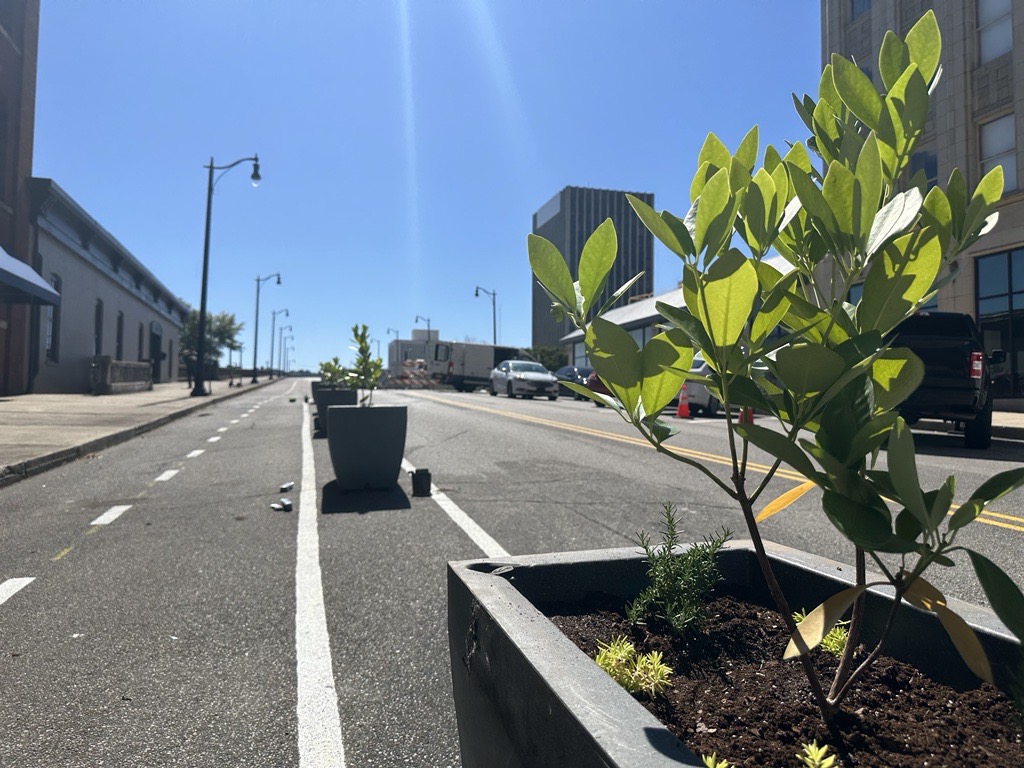
The Rainbow Viaduct, one of Birmingham’s oldest bridges, has been transporting people between the south and north sides of downtown for more than 130 years! Now as we look toward its future, you’ll see a pilot project on the bridge to make it more pedestrian and cyclist friendly while we determine the best next steps.
History of the bridge
The city built the bridge in 1891 to link the north and south ends of 21st Street (renamed Richard Arrington Jr. Boulevard in 1999 to honor Mayor Arrington at his retirement). Twenty years later, the Birmingham City Commission upgraded the viaduct to increase traffic. Those efforts were delayed by World War I, but construction began on the bridge in 1918 and cost $200,000. The bridge was formally dedicated on May 19, 1919, to the decorated veterans of the 167th Infantry Regiment who had been hosted in Birmingham and fought as part of the “Rainbow Division” during World War I. Colonel W. P. Screws formally accepted the dedication. At the apex of the bridge, a pair of memorial plaques, formerly topped with eagles, honor those veterans. Because the last structural update to the bridge was in 1918, it was not designed to handle modern traffic demands including 18-wheelers.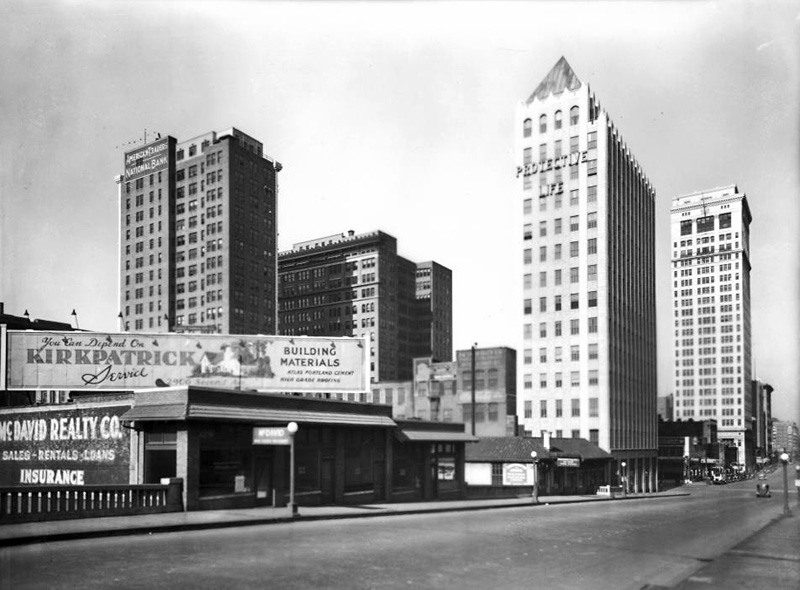
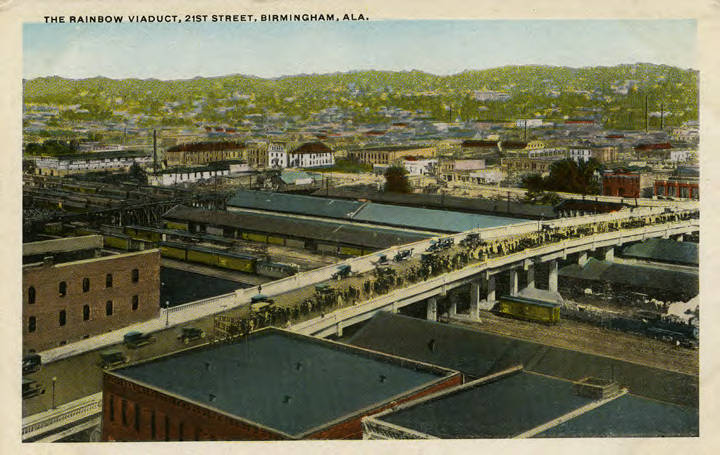
What’s happening now
The bridge was closed in January 2022 because of structural concerns. Although safe for pedestrians, cyclists, and scooters, the bridge is not currently approved for vehicular traffic. The City of Birmingham is partnering with REV Birmingham to issue a request for proposals (RFP) for an engineering and feasibility study to identify viable options for the bridge’s future. While that work is being done to determine the long-term, the City and REV have installed short-term measures to beautify the bridge and make it a more pleasant place for pedestrians and cyclists. The measures include temporary multi-use path, signage, traffic bollards, planters, and seating. CAP Ambassadors are keeping the plants watered and addressing litter and graffiti on the bridge. If you see any issues that need to be addressed on the Rainbow Viaduct, please call the CAP team at 205-251-0111. We will update this page with more details as the long-term work progresses. In the meantime, enjoy some time on the historic Rainbow Viaduct – and tag @downtownbhm on Instagram and Facebook in your photos. It’s a top spot for beautiful views of the downtown we know and love!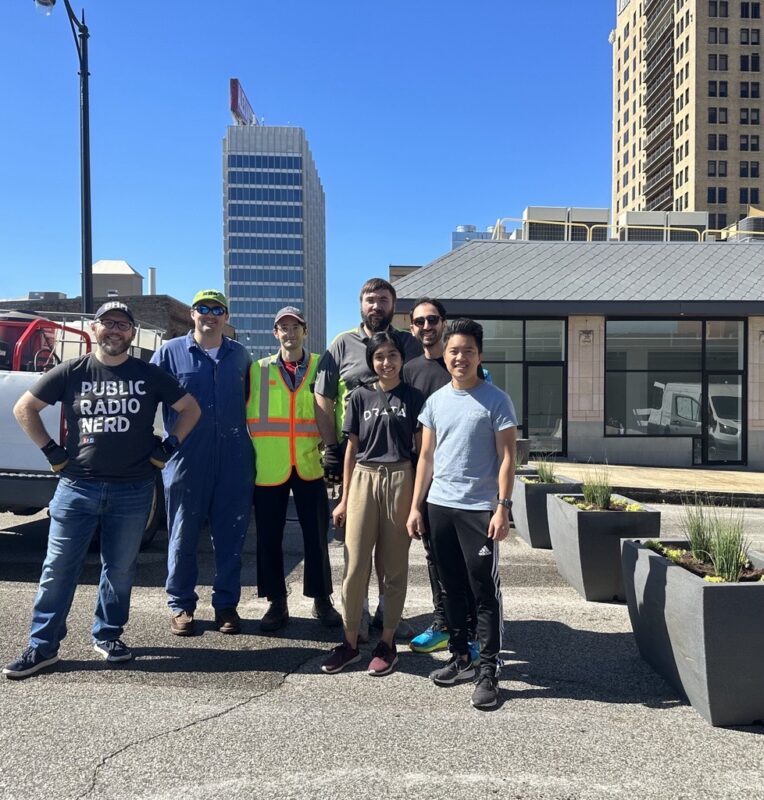
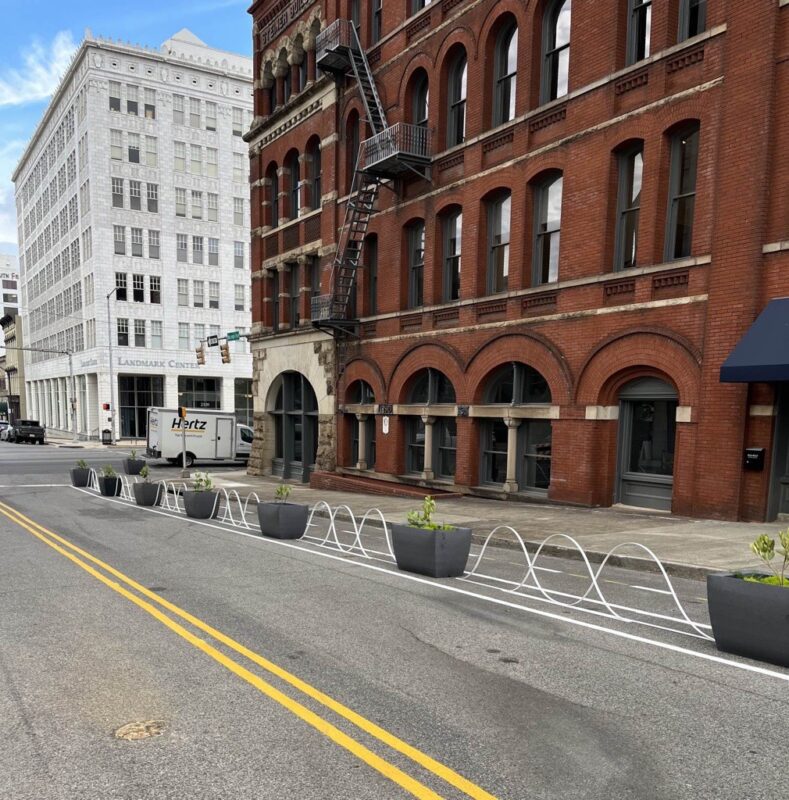
Related News
-
Preservation that pays: How historic tax credits can power a downtown revival
Filed Under: Developer, Downtown Birmingham, Front Page, Historic Preservation
For preservation advocates (or “building huggers,” as we like to call ourselves), historic tax credits are essential. They don’t just help save historic buildings — they support local economies, encourage private investment and breathe new life into spaces that shape the identity of our communities.
-
Listing history, building legacy: The National Register’s role in downtown’s historic districts
Filed Under: Historic Preservation
We’ve explored downtown Birmingham’s preservation wins and mourned its losses; this time, we’re turning our attention to the tools that help make preservation possible. In this piece, we’ll be diving into what is arguably the most foundational tool — and often the first step — in any preservation project: getting a building or district listed on the National Register of Historic Places.
-
Date night done right: Romantic outings you’ll fall for in Birmingham
Filed Under: Birmingham Food & Drink, Downtown Birmingham, Family Friendly, Front Page, Residential, Yaysayers
Looking for the perfect way to spend quality time with your special someone? In this guide, we’ve rounded up a variety of Magic City date ideas tailored to different tastes, personalities and interests. So, grab your partner, or even a few friends, and explore some of Birmingham’s best spots for a truly memorable time.